
Create a Simple Switch Button
In the following tutorial you will learn how to create a simple switch button in Graphic for Mac.
For starters you will learn how to setup a simple grid and how to create the main shapes using the Ellipse Tool and then Rounded Rectangle Tool. Next, you'll learn how to work with linear gradients and how to add shading and highlights for your shapes using some of the effects available in the Effects pane.
Finally, you''ll learn how to speed up your work using grouping techniques.
Step 1
Go to File > New (Command + N) to bring up the New Document window. Select the Grid document style, set the document units to pixels, and set the document dimensions to 600 pixels wide by 600 pixels high.
Next, we'll set up the document grid. Switch to the Grid pane in the Properties panel. If the Properties panel is not currently visible, you can easily open it using the ruler icon that lies above the Layers panel. Change the grid X Spacing and Y Spacing to 5, set the Subdivisions to 0 and enable Snap to Grid (Command + Shift + ').
Keep in mind that you can quickly enable or disable the grid and the Snap to Grid feature using the Command + ' and Command + Shift + ' keyboard shortcuts.
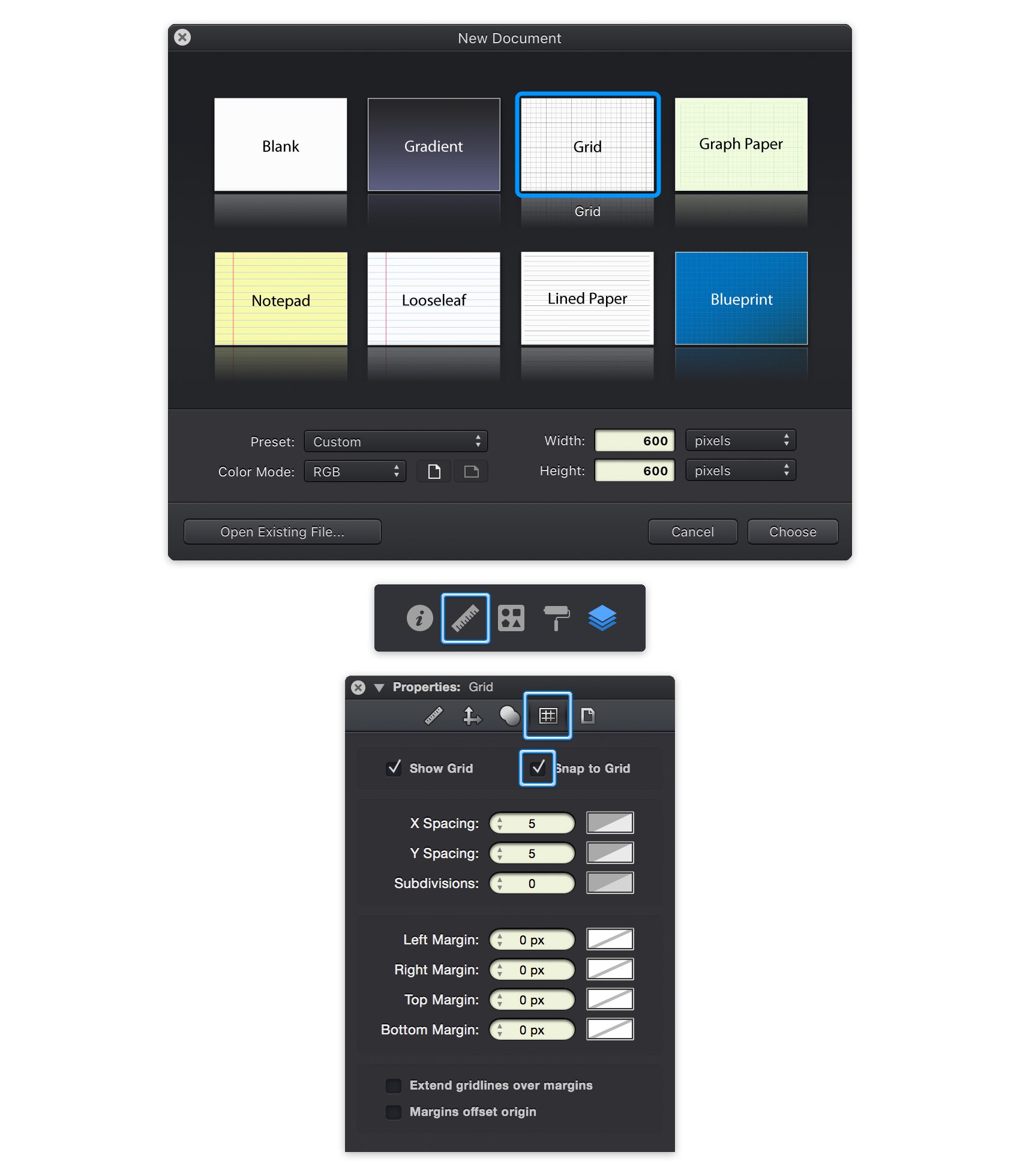
Step 2
Focus on the Toolbar and notice that by default the fill color is set to white while the stroke color is set to black.
Click the fill color well and set it to R=0 G=152 B=245 and then click the stroke color well. Drag the Alpha slider to 0% and this will make the stroke invisible. Pick the Rectangle Tool (M), focus on your canvas and create a 600 px square. Holding the Shift key will make it a lot easier for you to create that perfect square.
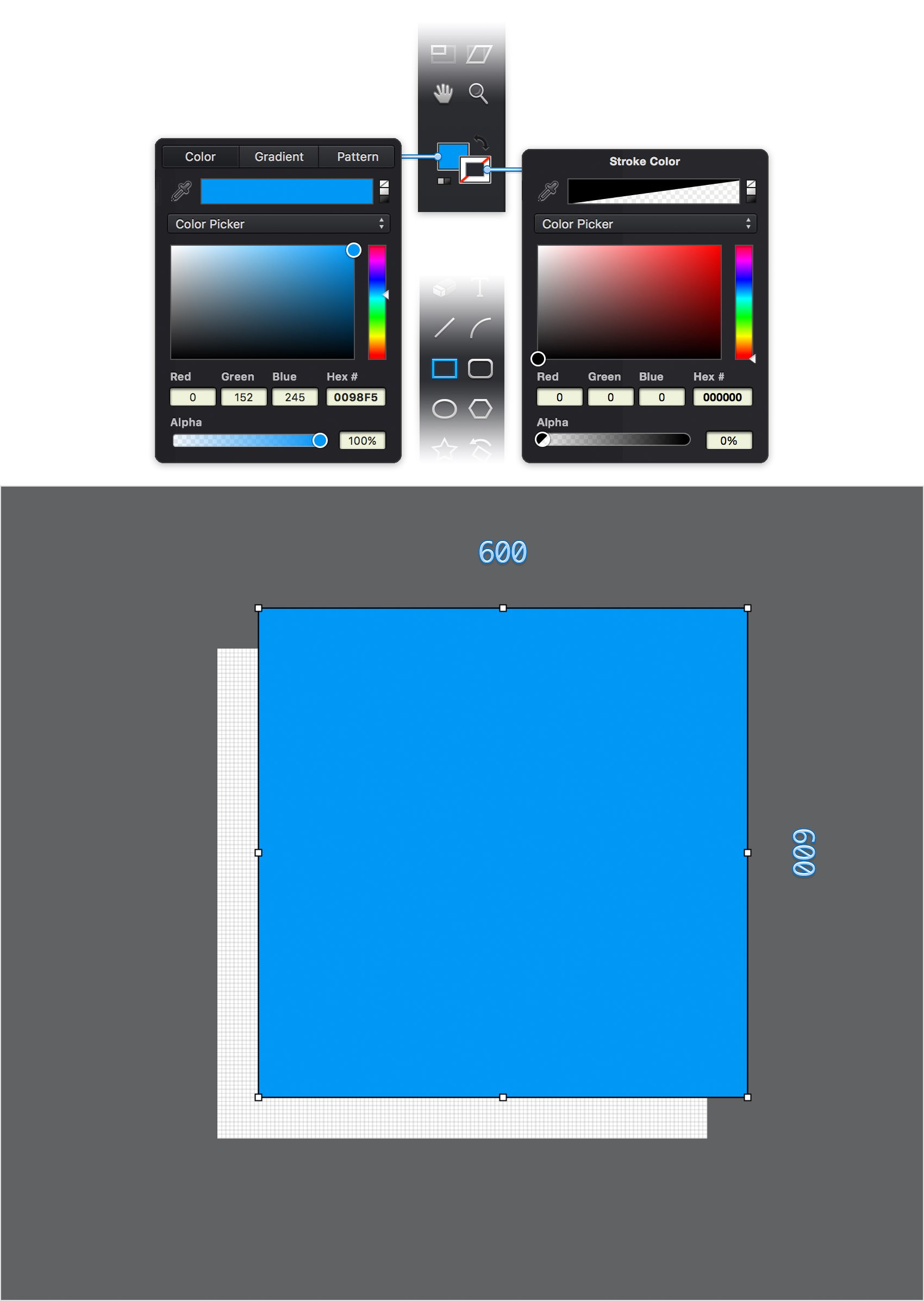
Step 3
Make sure that your blue shape stays selected, focus on the Alignment pane from the Properties panel and click the Horizontal Centers and Vertical Centers buttons. This will bring your square in the center of the canvas.
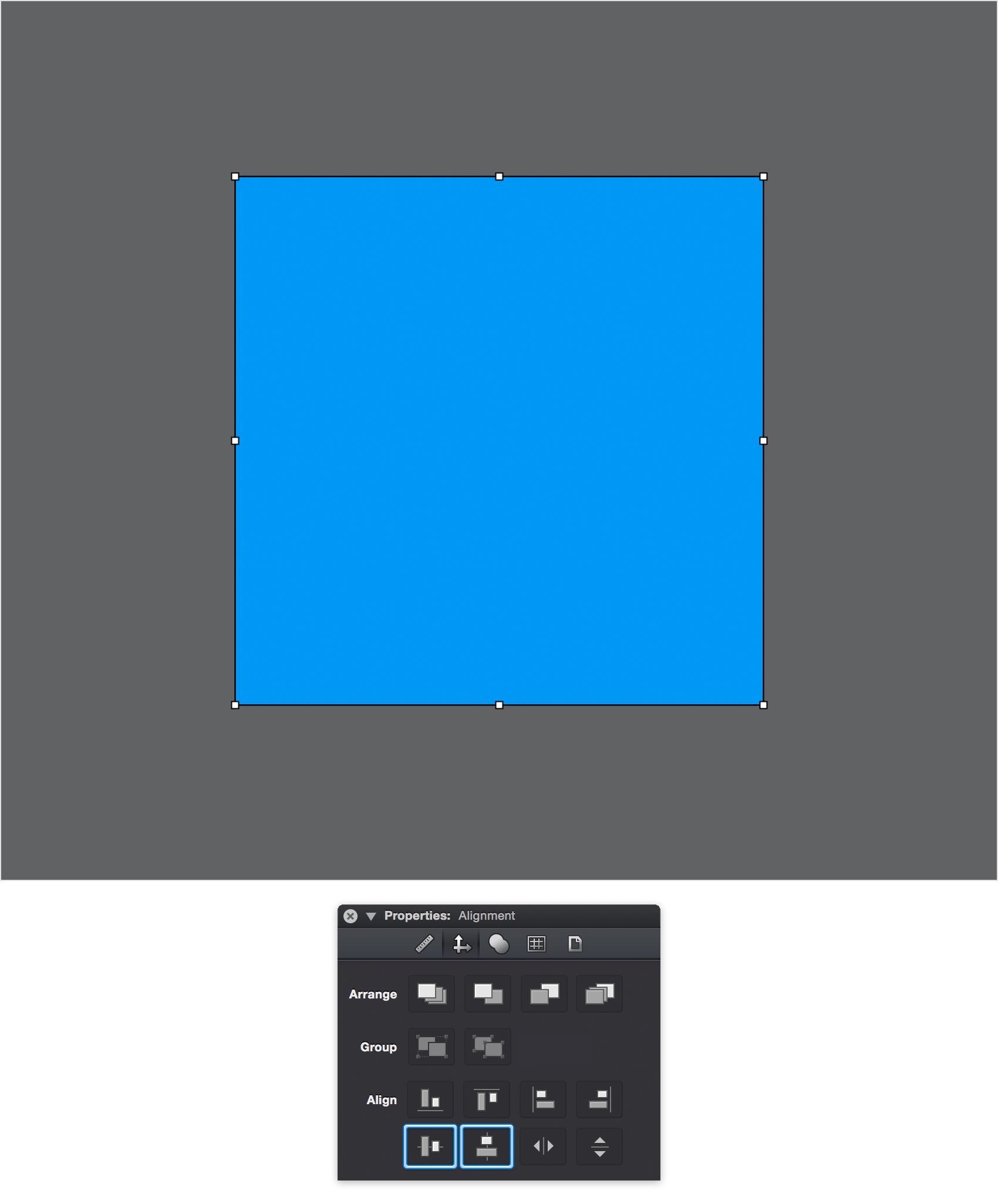
Step 4
Return to your Toolbar, make sure that the Stroke is invisible and then set the Fill color to R=0 G=124 B=215.
Pick the Rounded Rectangle Tool (Shift + M), focus on the Tool Options bar and drag that Corner Radius slider to 30 pt. Move to your canvas and create a 170 x 50 px.
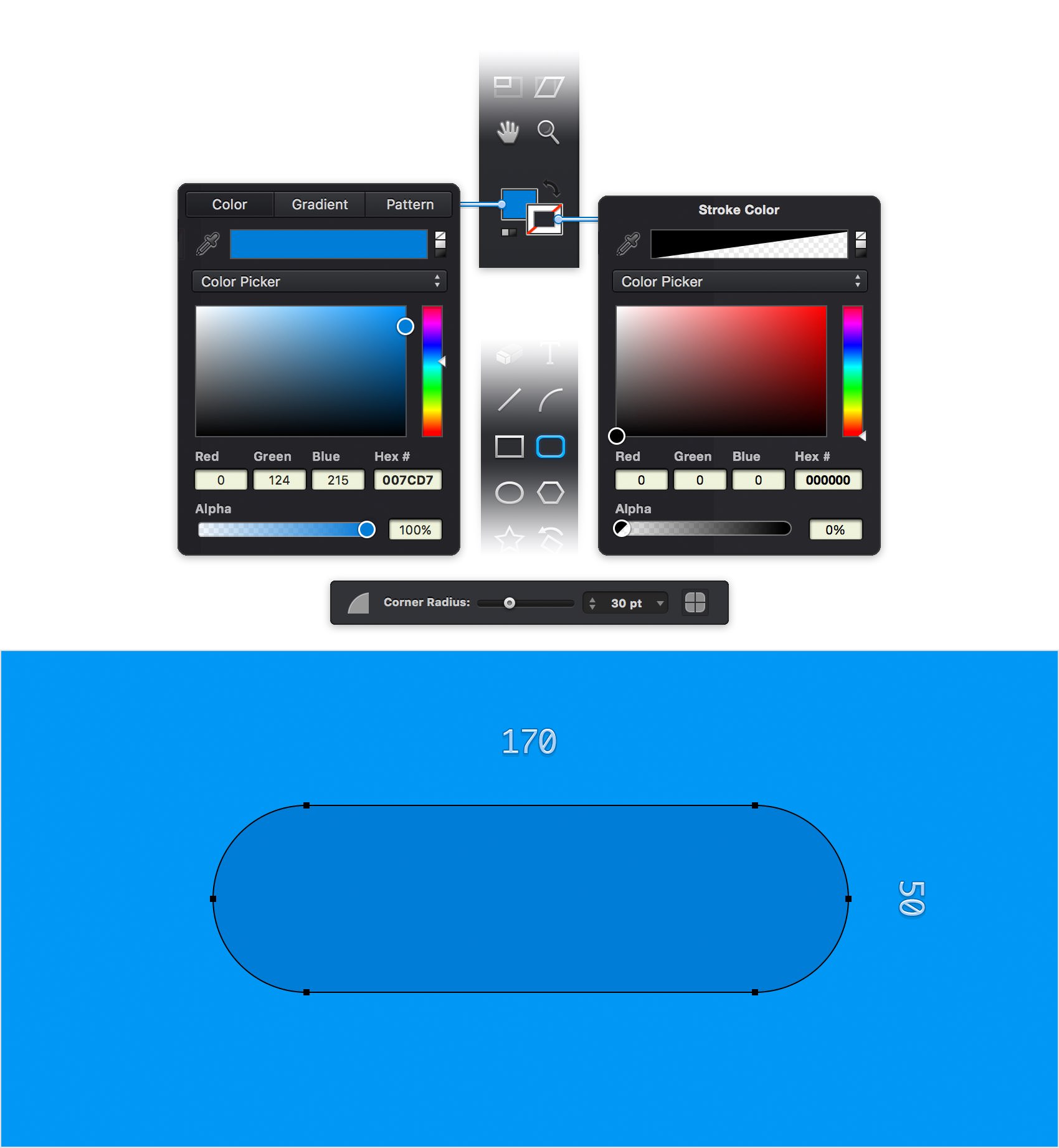
Step 5
Make sure that your rounded rectangle stays selected, focus on the Effects pane from the Appearance panel and check the box that stands for the existing Drop Shadow to activate it. If the Appearance pane is not currently visible, you can easily open it using the leftmost panel icon.
Enter 1 in the Y box and 0 in the other two boxes, select Soft Light from the Blend Mode drop-down menu and then click the color well that stands for this effects. Drag the Alpha slider to 40% and replace the existing color with a simple white (R=255 G=255 B=255).
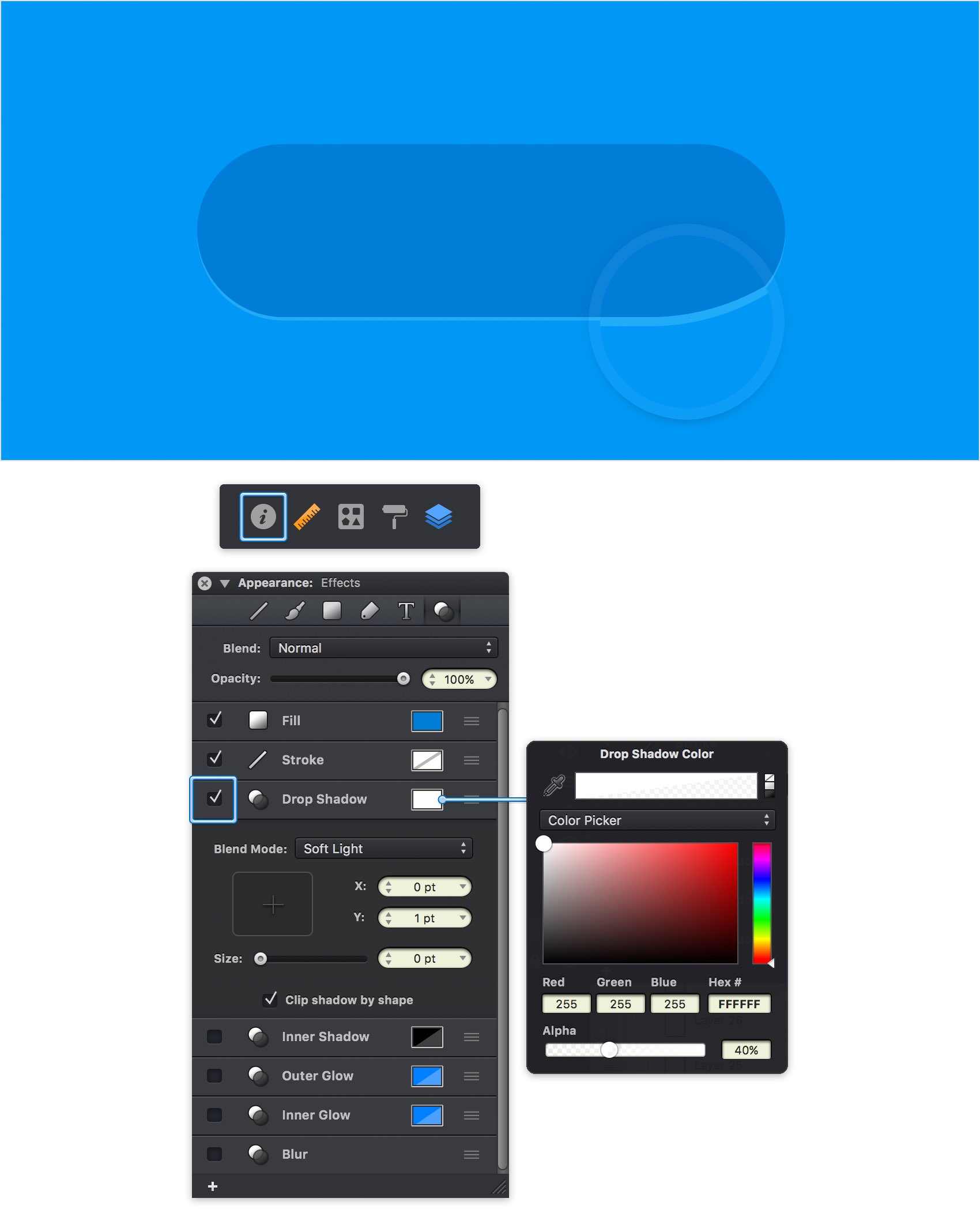
Step 6
Make sure that your rounded rectangle stays selected and keep focusing on the Effects pane. Simply right click on the existing Drop Shadow and go to Duplicate. Select the newly added effect, make sure that it lies below the existing Drop Shadow and then enter the attributes shown in the following image.
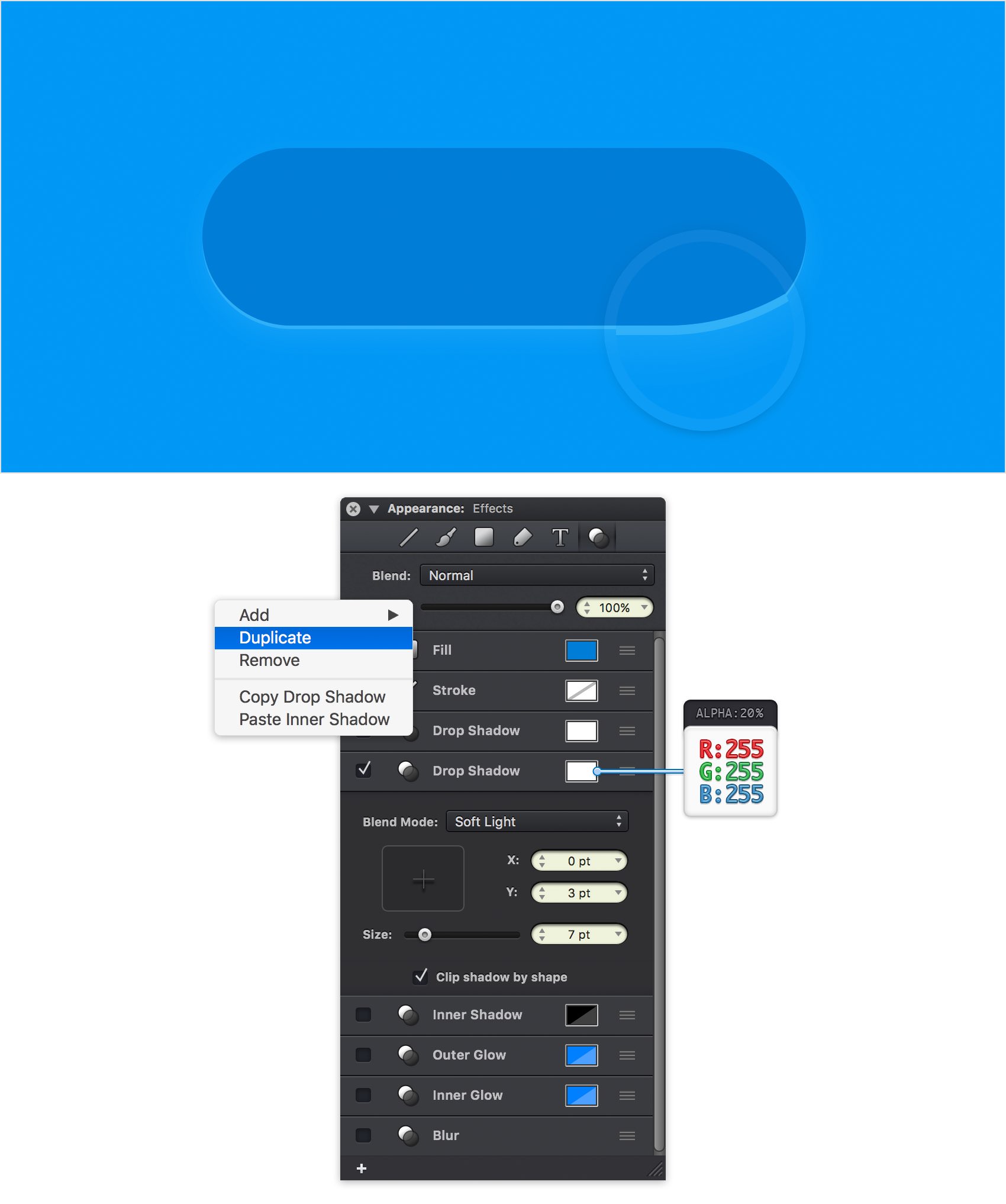
Step 7
Make sure that your rounded rectangle stays selected and keep focusing on the Effects pane. Activate the existing Inner Shadow effect and enter the attributes shown in the following image.
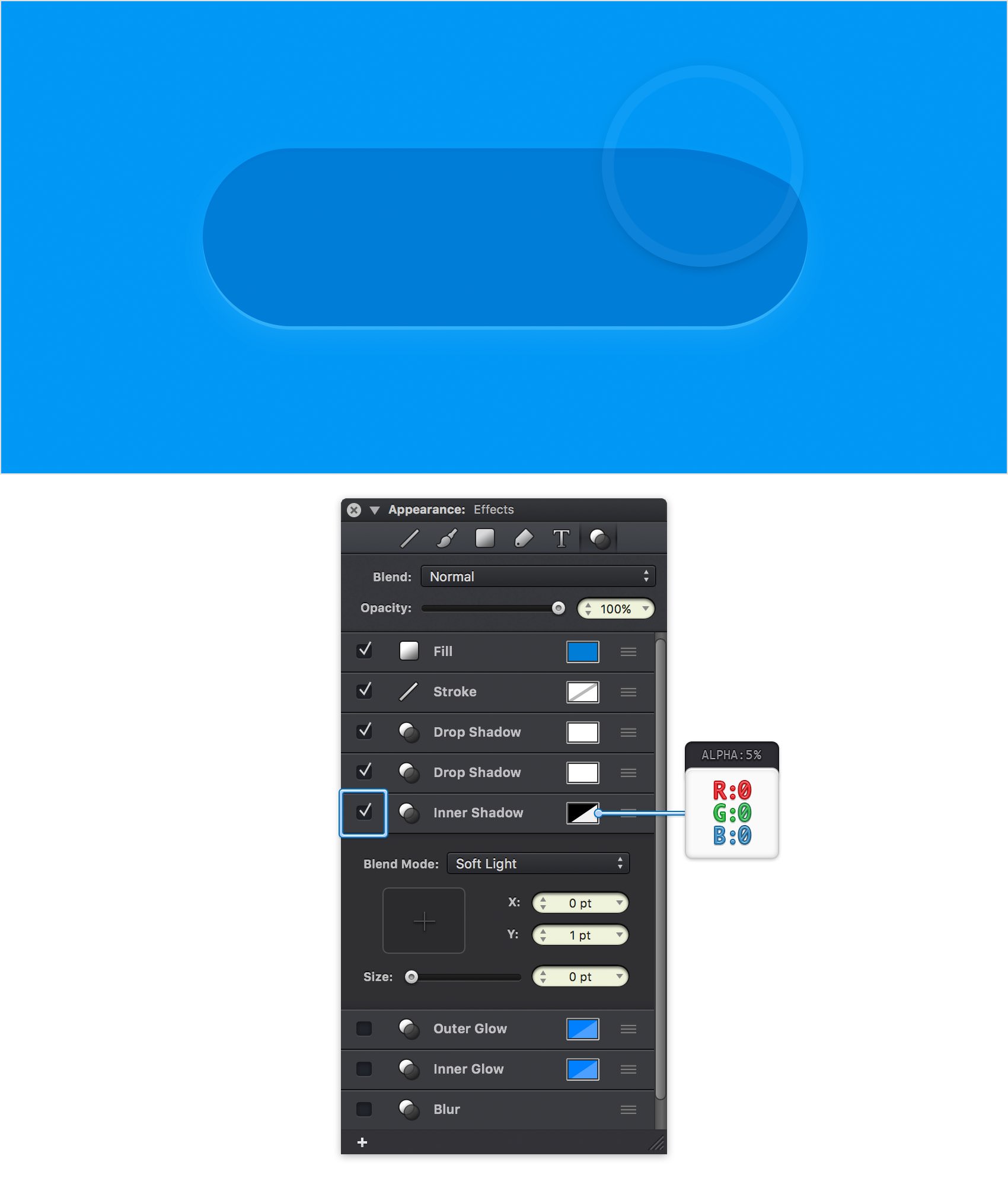
Step 8
Make sure that your rounded rectangle stays selected, keep focusing on the Effects pane and duplicate the existing Inner Shadow. Select the newly added effect, drag it below the existing Inner Shadow and then enter the attributes shown in the following image.

Step 9
Make sure that your rounded rectangle stays selected, keep focusing on the Effects**** pane and duplicate the bottom Inner Shadow. Select the newly added effect, drag it below the existing Inner Shadows and then enter the attributes shown in the following image.

Step 10
Make sure that your rounded rectangle stays selected and keep focusing on the Effects pane. Activate the existing Inner Glow and enter the attributes shown in the following image.
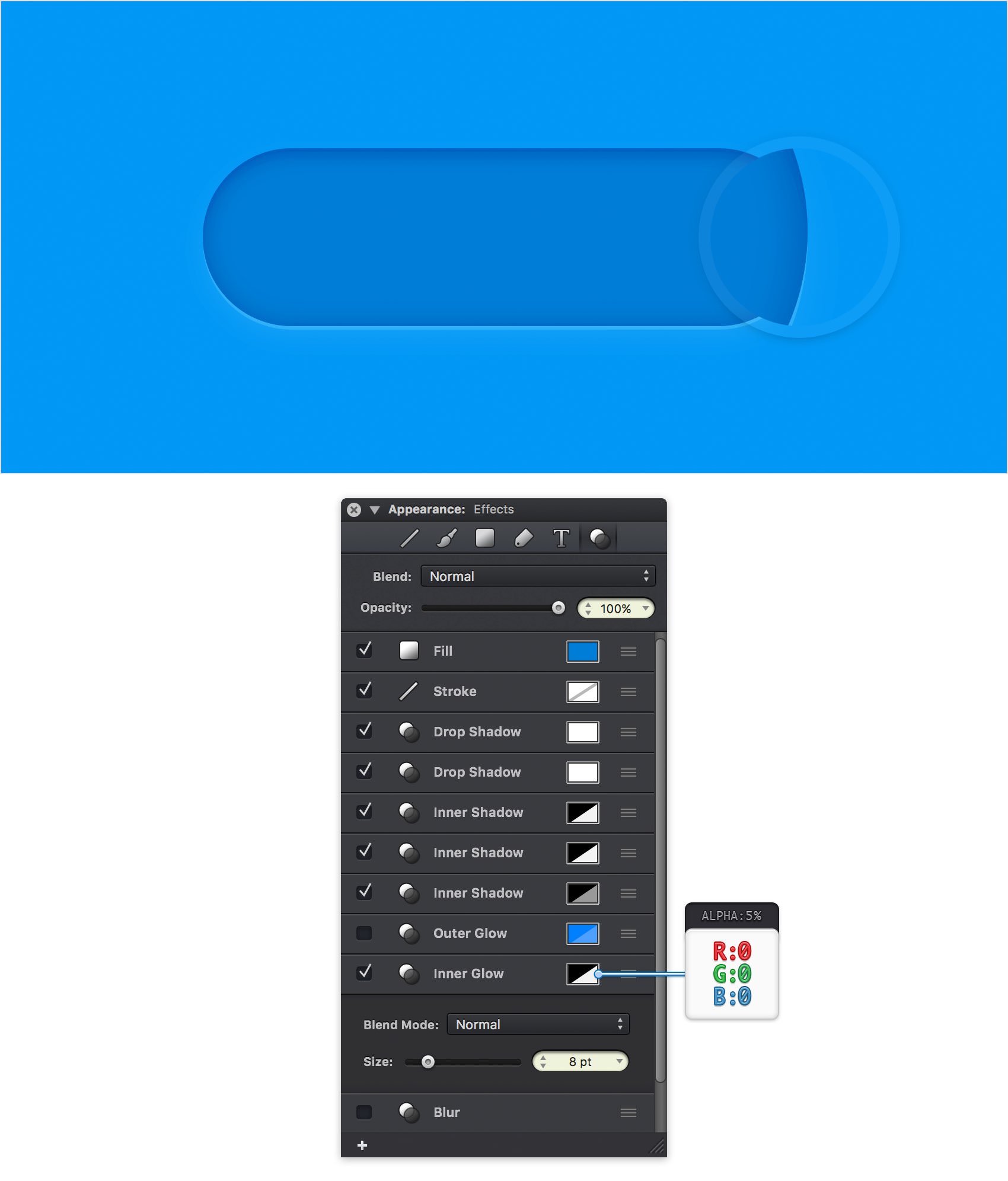
Step 11
Get back to your Toolbar, make sure that the Stroke is invisible and then set the Fill color to R=74 G=197 B=237.
Reselect the Rounded Rectangle Tool (Shift + M), focus on the Tool Options bar and make sure that the Corner Radius is set to 30 pt. Move to your canvas, create a 90 x 40 px shape and place it as shown in the following image.

Step 12
Make sure that your smaller rounded rectangle stays selected, focus on the Effects pane and add a second Fill using the plus button located in the bottom, left corner of the pane.
Select your new Fill, select Linear Gradient from the Type drop-down menu and Overlay from the Blend drop-down menu, set the Angle to 90 degrees and then move to the gradient sliders. Select the left slider, drag the Alpha slider to 20% and set the color to black (R=0 G=0 B=0) and then select the right slider, drag the Alpha slider to 0% and set the color to white.
Now, click on the gradient bar to add a new gradient slider for your gradient. Select it, set the color to black and the Alpha slider to 50% and then drag it to the left until the Location tooltip shows 25%. Add a fourth gradient slider, make it white and set the Location to 75%.
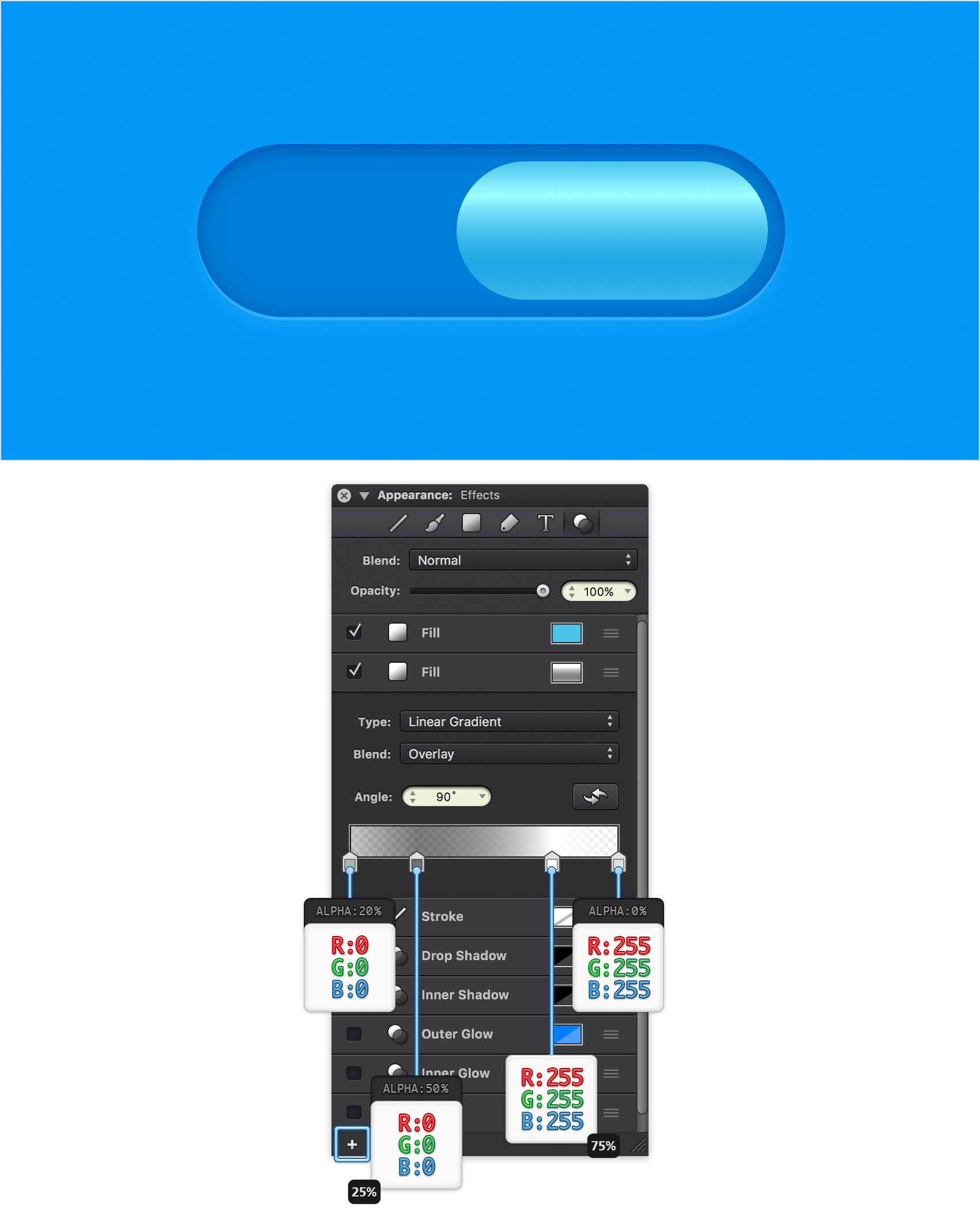
Step 13
Make sure that your smaller rounded rectangle stays selected and focus on the Effects pane. Select the Stroke and replace the existing attributes with the ones shown in the following image.
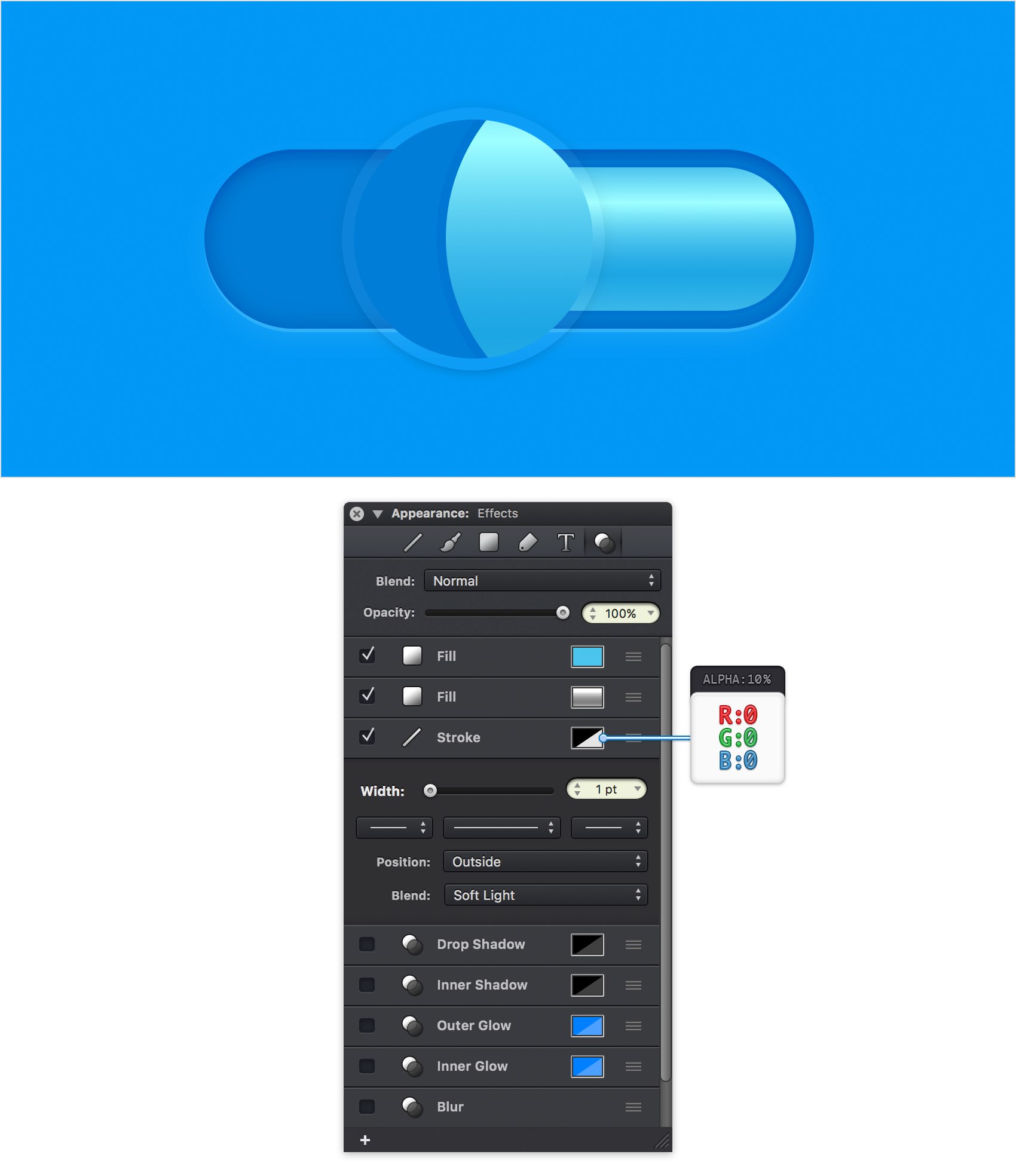
Step 14
Make sure that your smaller rounded rectangle stays selected and keep focusing on the Effects pane. Activate the existing Drop Shadow, drag it above the Stroke and then enter the attributes shown in the following image.

Step 15
Make sure that your smaller rounded rectangle stays selected, keep focusing on the Effects pane and add a second Drop Shadow. Select this new effect, drag it below the existing Drop Shadow and then enter the attributes shown in the following image.
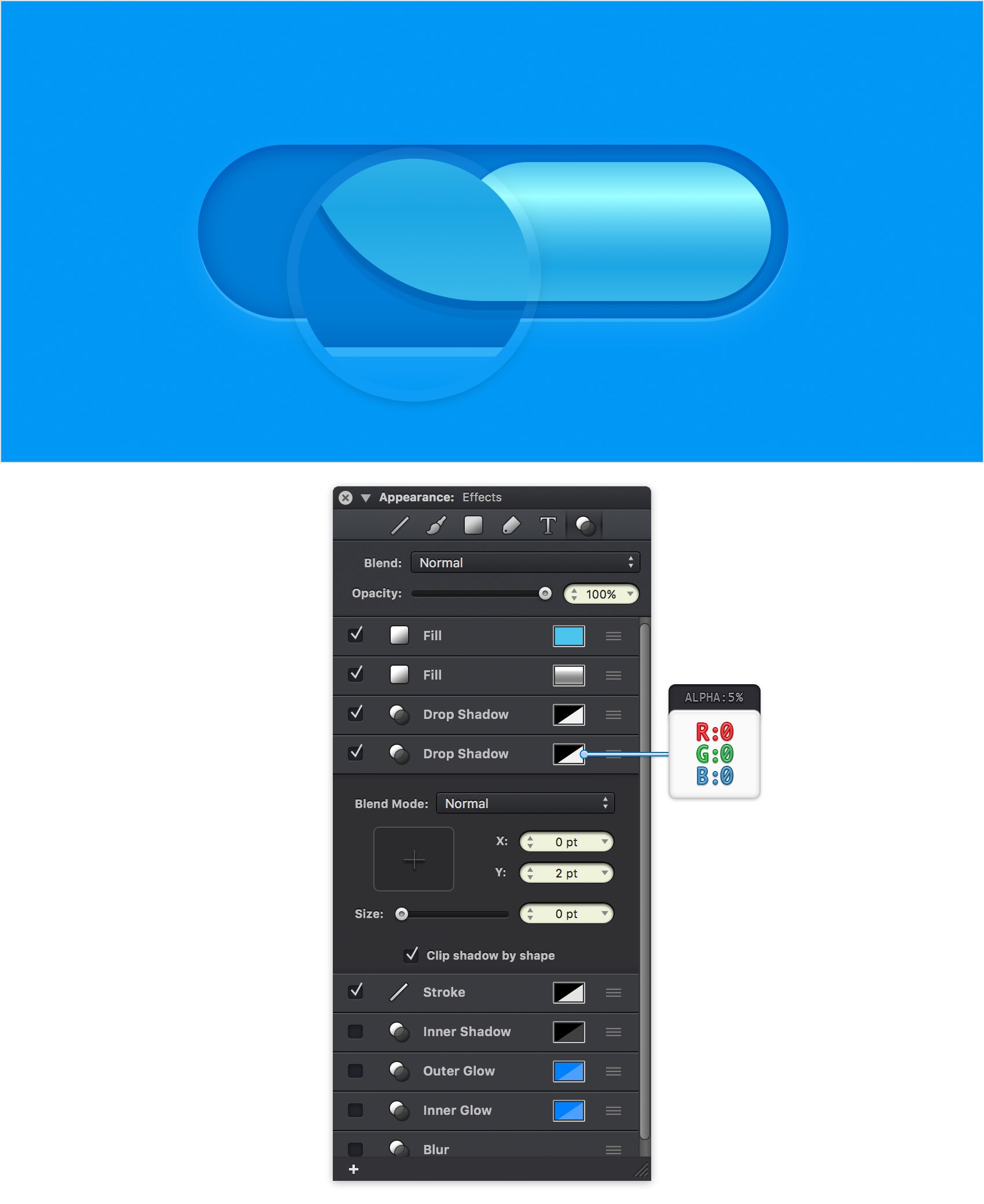
Step 16
Make sure that your smaller rounded rectangle stays selected, keep focusing on the Effects pane and add a third Drop Shadow. Select this new effect, drag it below the existing Drop Shadows and then enter the attributes shown in the following image.
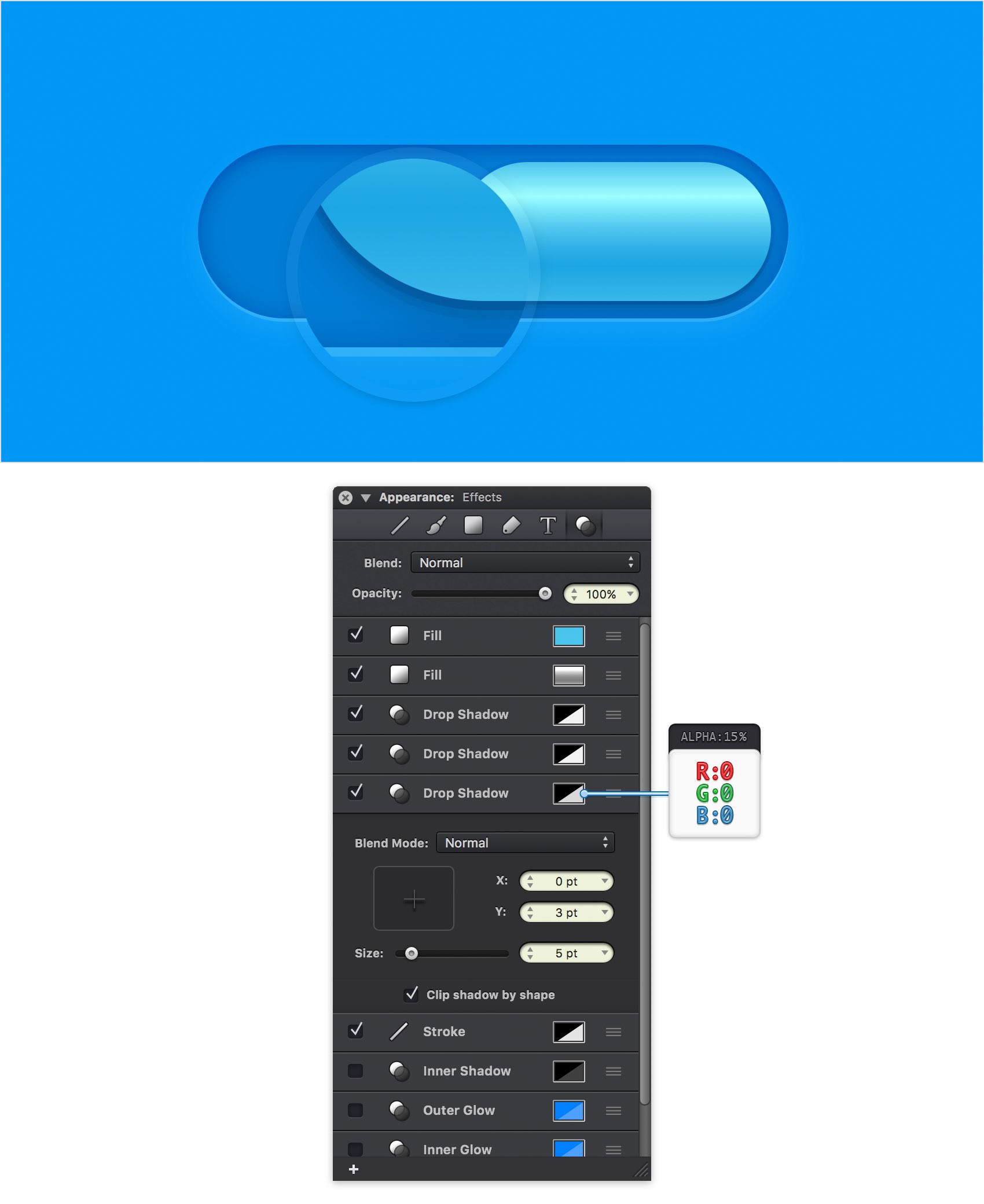
Step 17
Make sure that your smaller rounded rectangle stays selected, keep focusing on the Effects pane and activate the existing Inner Shadow. Select this new effect, drag it below the bottom Drop Shadow and then enter the attributes shown in the following image.
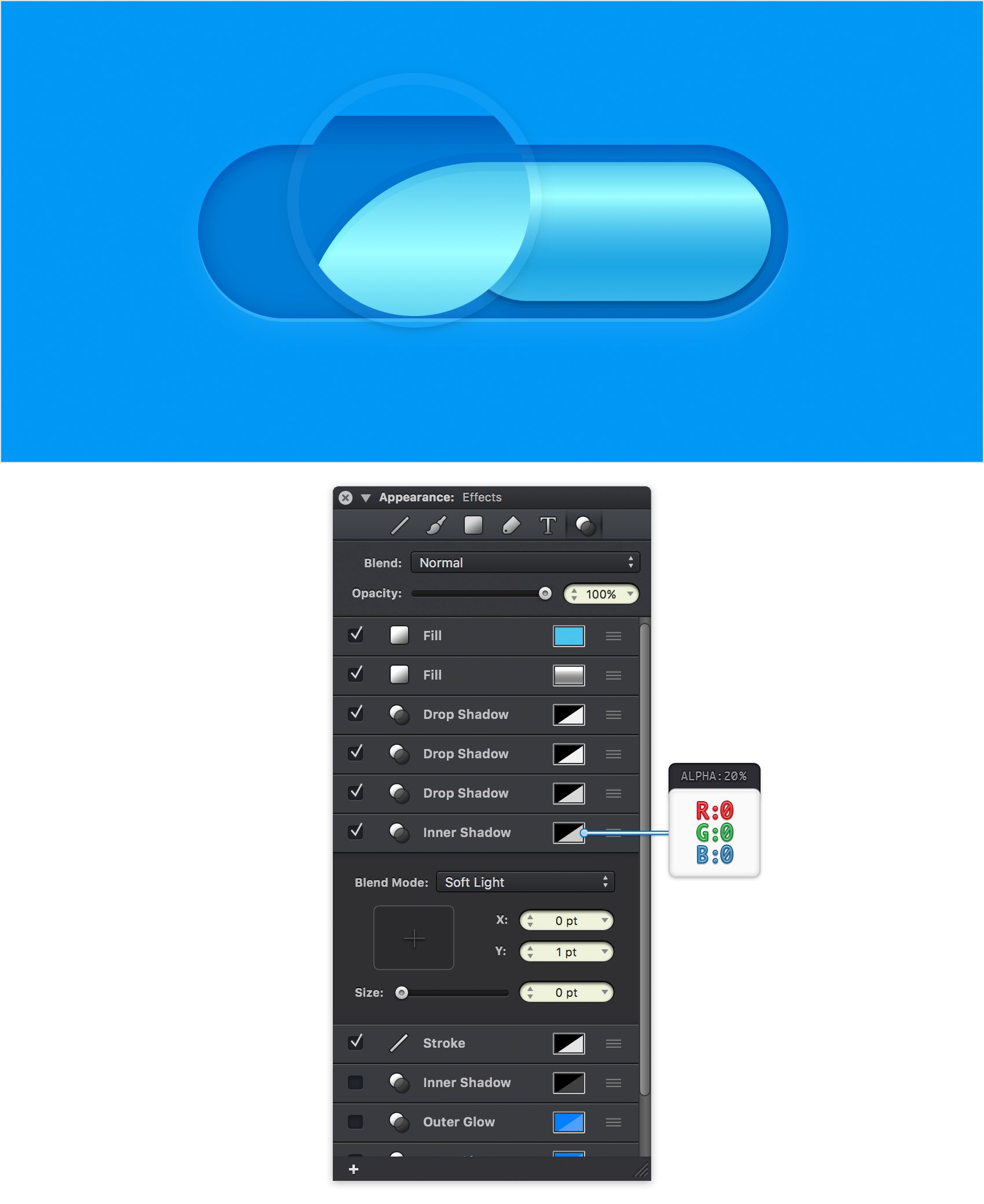
Step 18
Make sure that your smaller rounded rectangle stays selected, keep focusing on the Effects pane and add a second Inner Shadow. Select this new effect, drag it below the existing Inner Shadow and then enter the attributes shown in the following image.
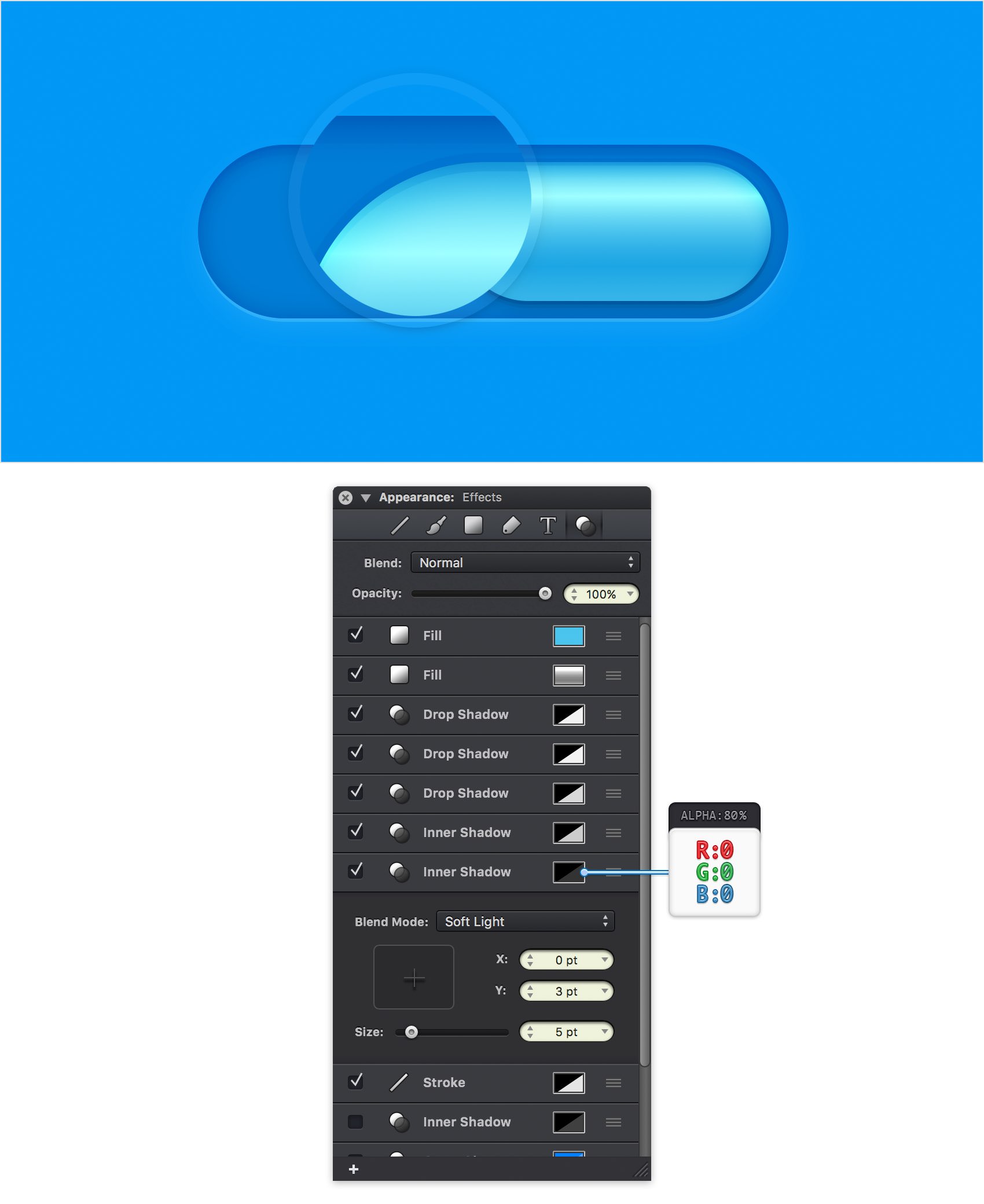
Step 19
Make sure that your smaller rounded rectangle stays selected, keep focusing on the Effects pane and add a third Inner Shadow. Select this new effect, drag it below the existing Inner Shadows and then enter the attributes shown in the following image.
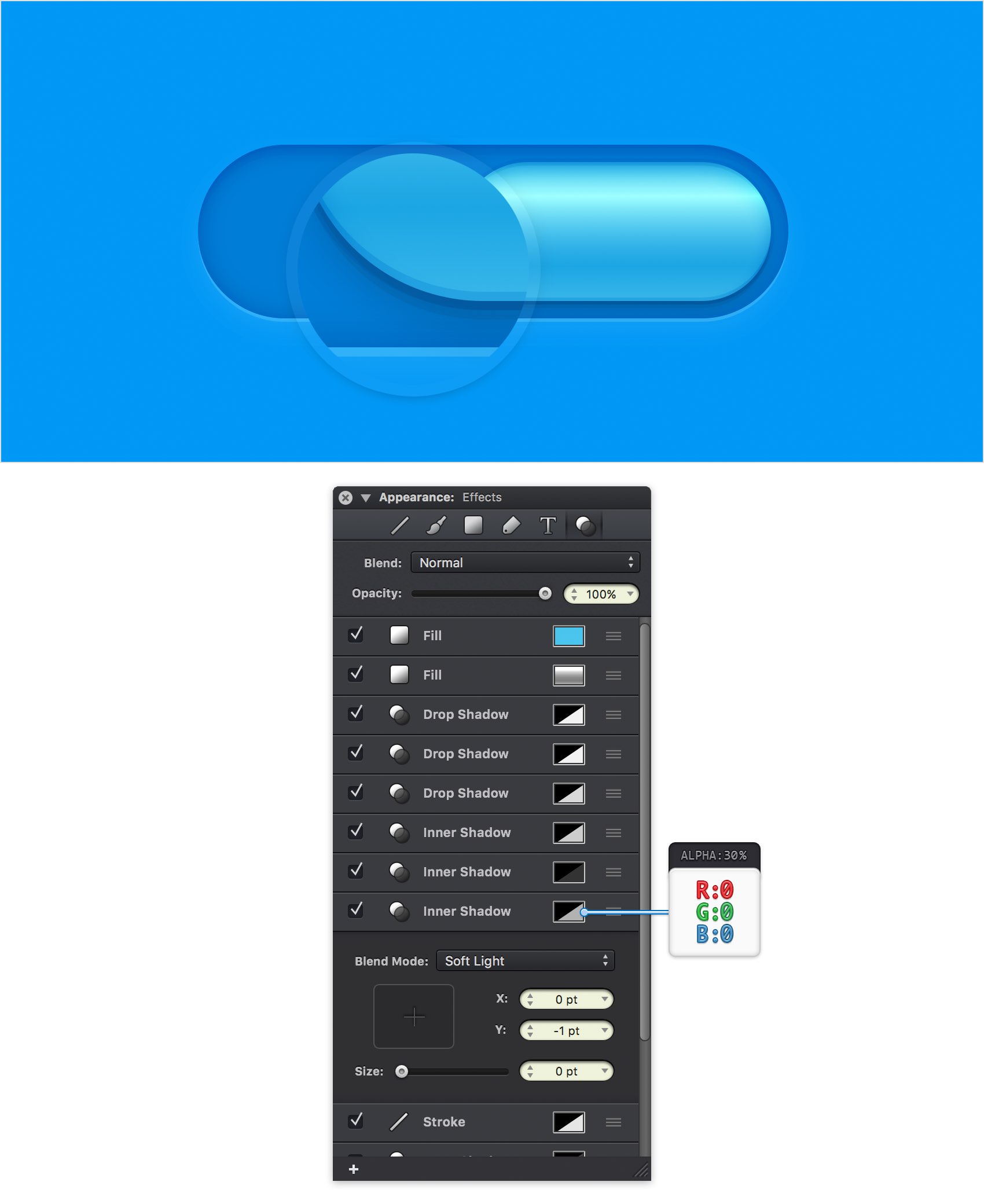
Step 20
Make sure that your smaller rounded rectangle stays selected, keep focusing on the Effects pane and add a fourth Inner Shadow. Select this new effect, drag it below the existing Inner Shadows and then enter the attributes shown in the following image.
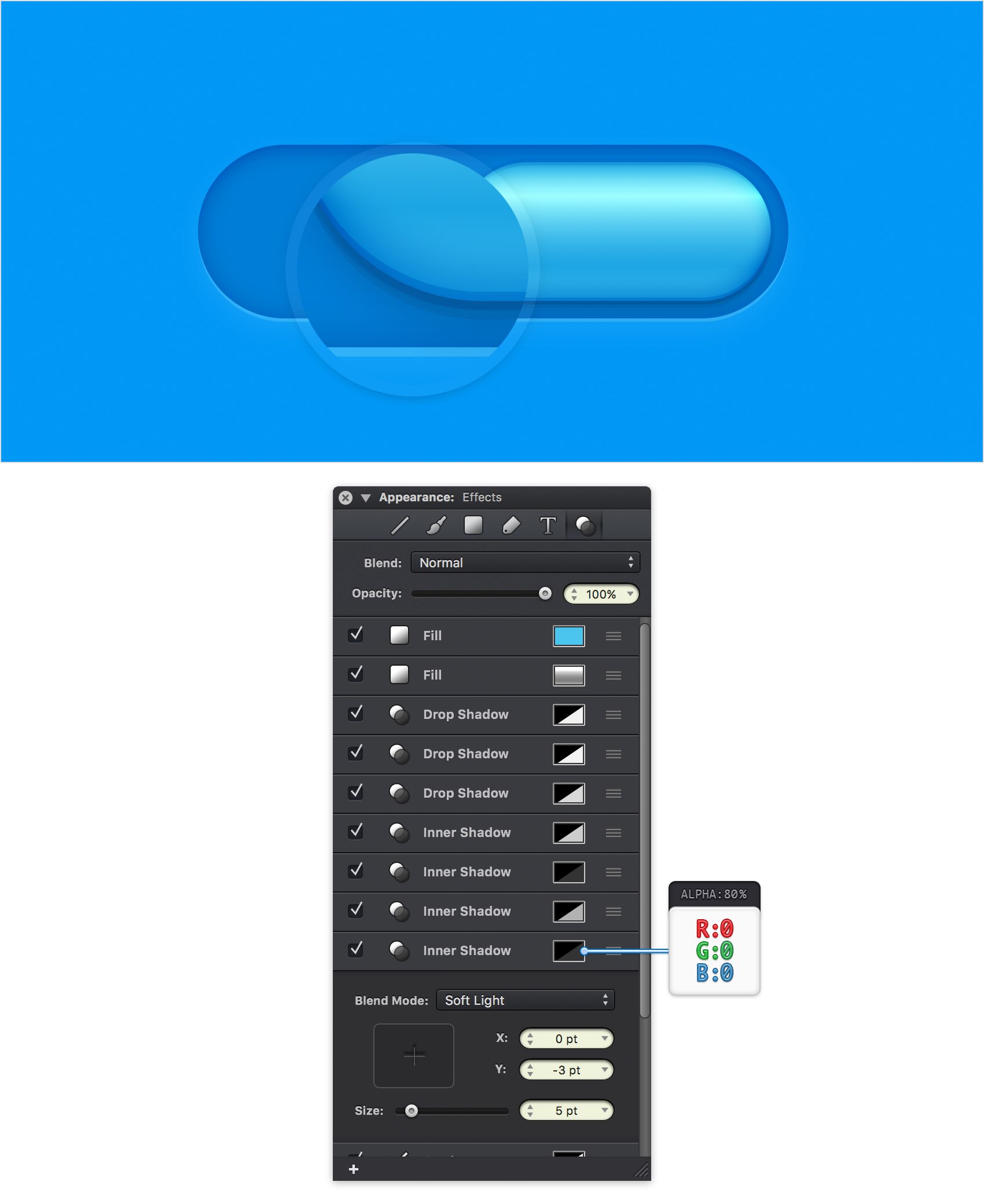
Step 21
Return to your Toolbar, make sure that the Stroke is invisible and then set the Fill color to R=255 G=255 B=255.
Using the Ellipse Tool (O), create a 40 px circle and place it as shown in the first image. Duplicate this shape (Command + C > Command + V), select the copy and place it as shown in the second image.

Step 22
Select your right, white circle and focus on the Effects pane. Select the existing Fill and replace the flat color with the linear gradient shown in the following image. Make sure that you're setting the Angle to 45 degrees.
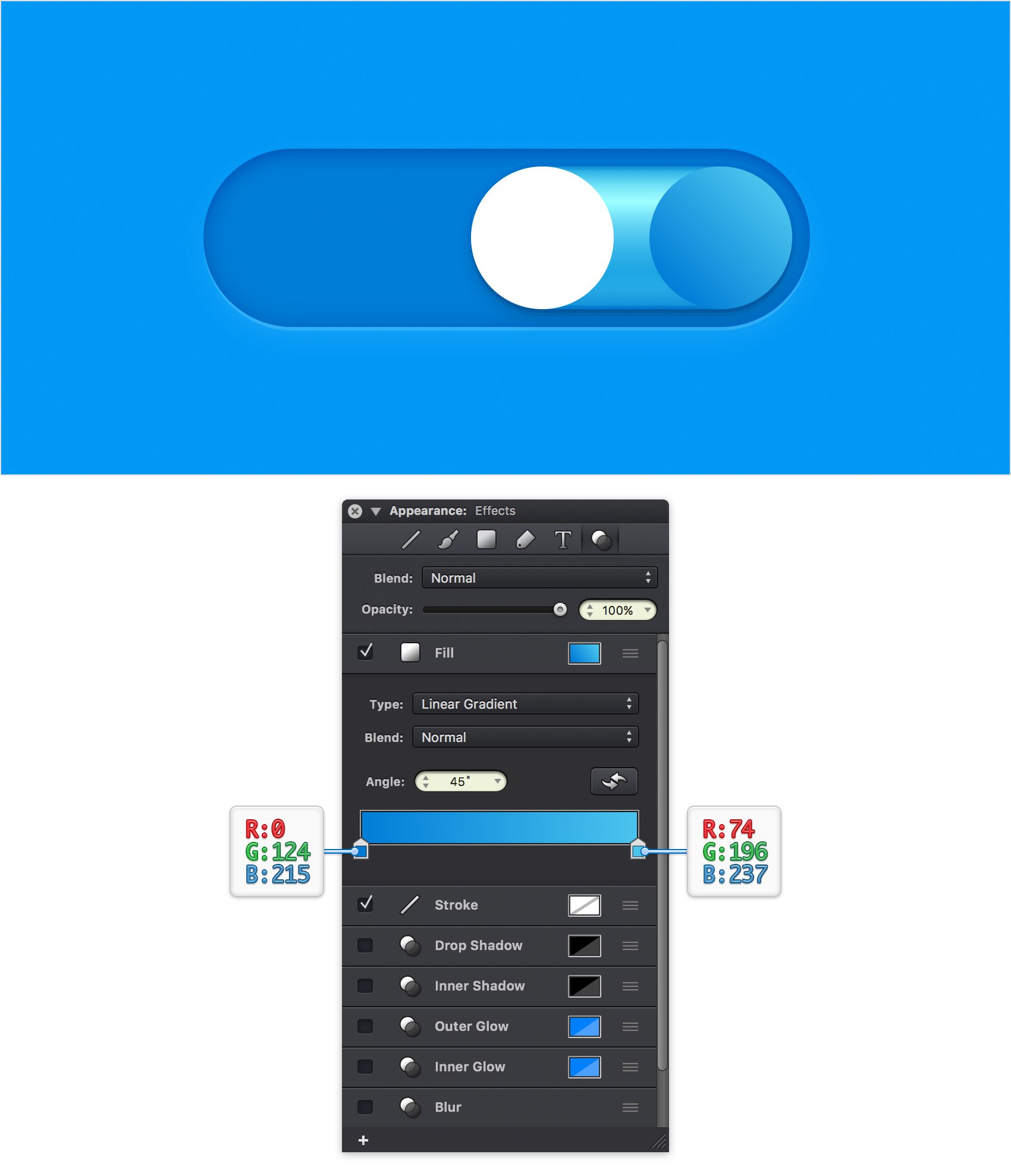
Step 23
Make sure that your right circle stays selected and keep focusing on the Effects pane. Activate the existing Drop Shadow and enter the attributes shown in the following image.
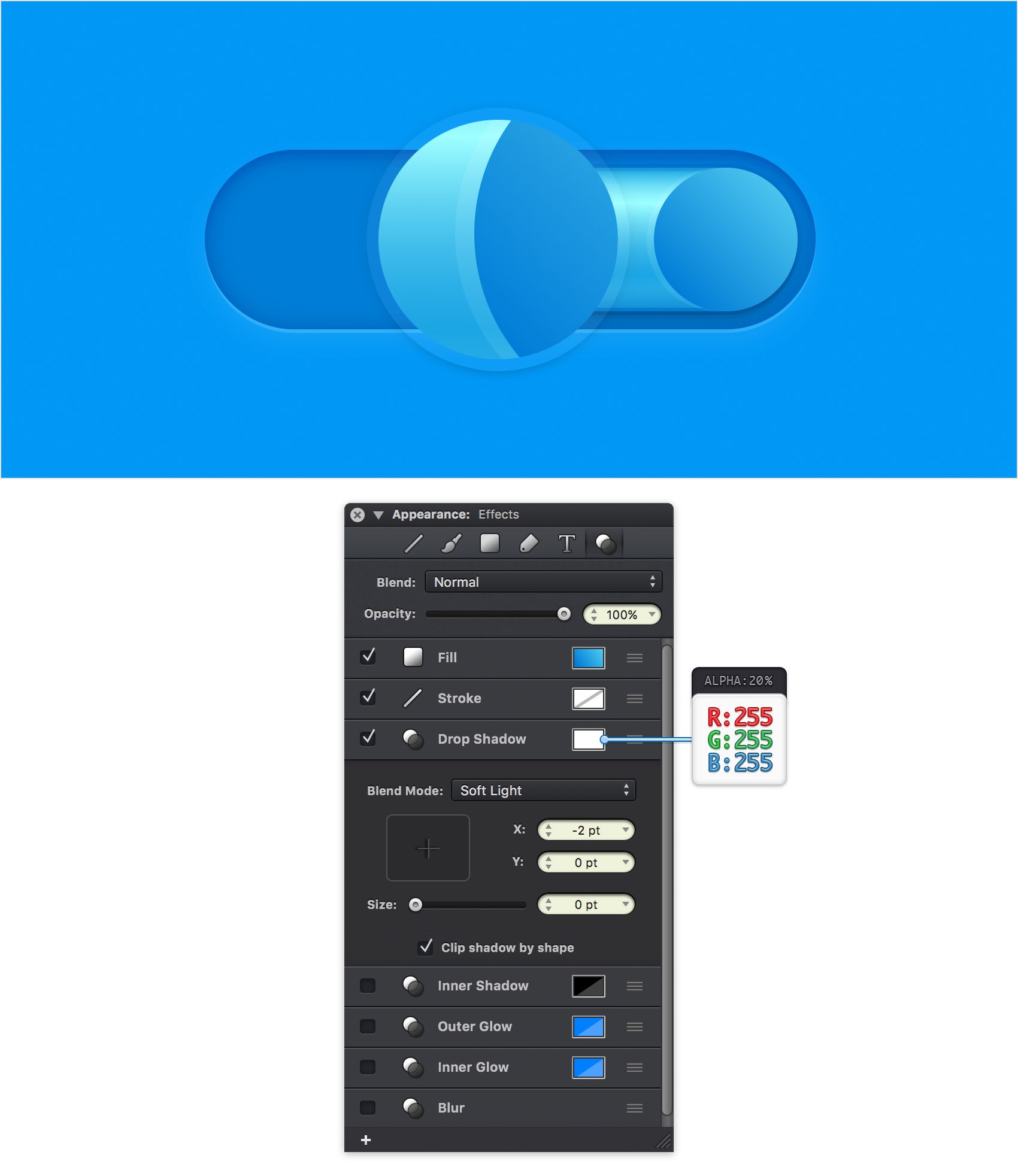
Step 24
Make sure that your right circle stays selected and keep focusing on the Effects pane. Activate the existing Inner Shadow and enter the attributes shown in the following image.
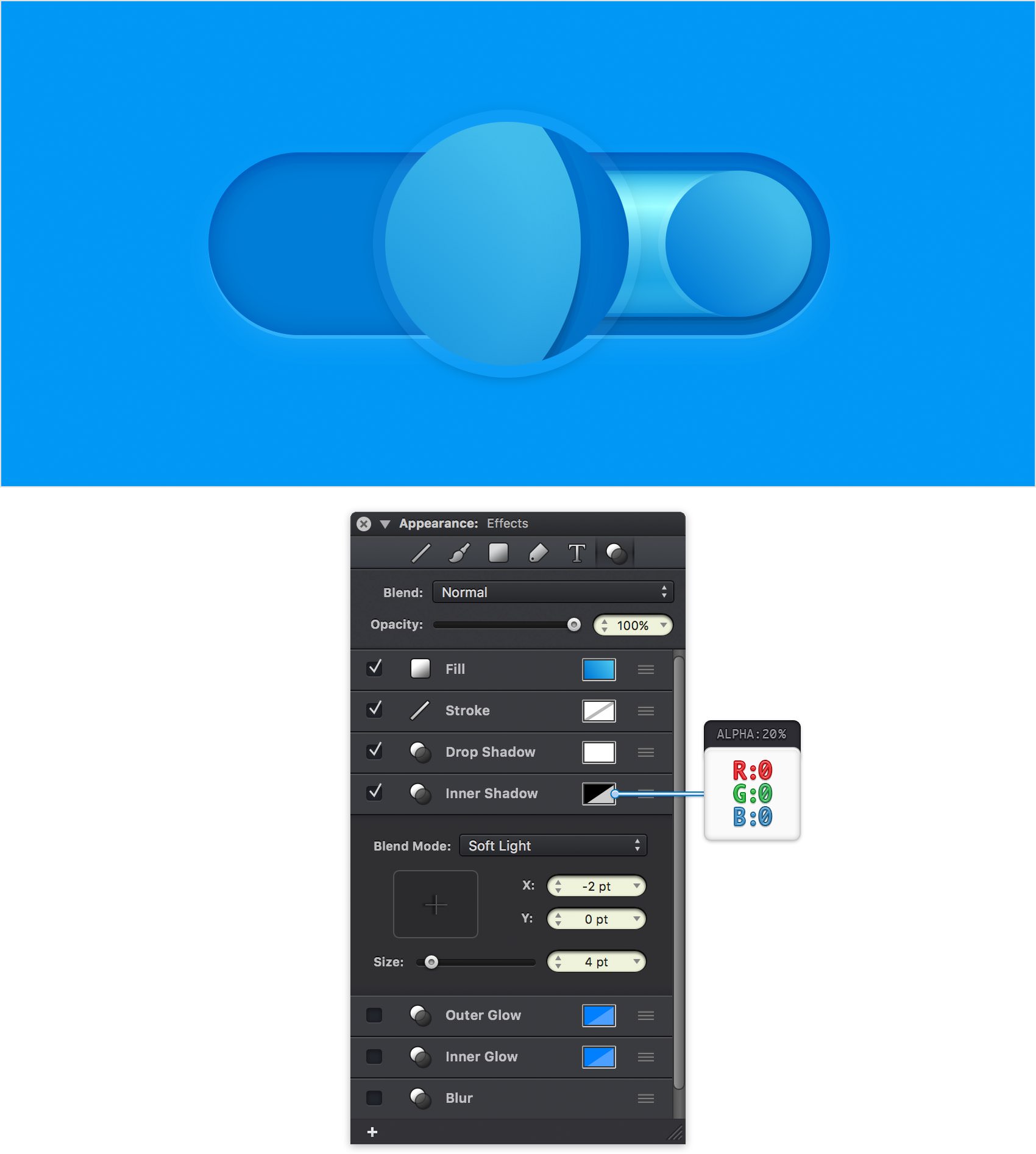
Step 25
Make sure that your right circle stays selected, keep focusing on the Effects pane and add a second Inner Shadow. Select this new effect, make sure that it lies below the existing Inner Shadow and then enter the attributes shown in the following image.
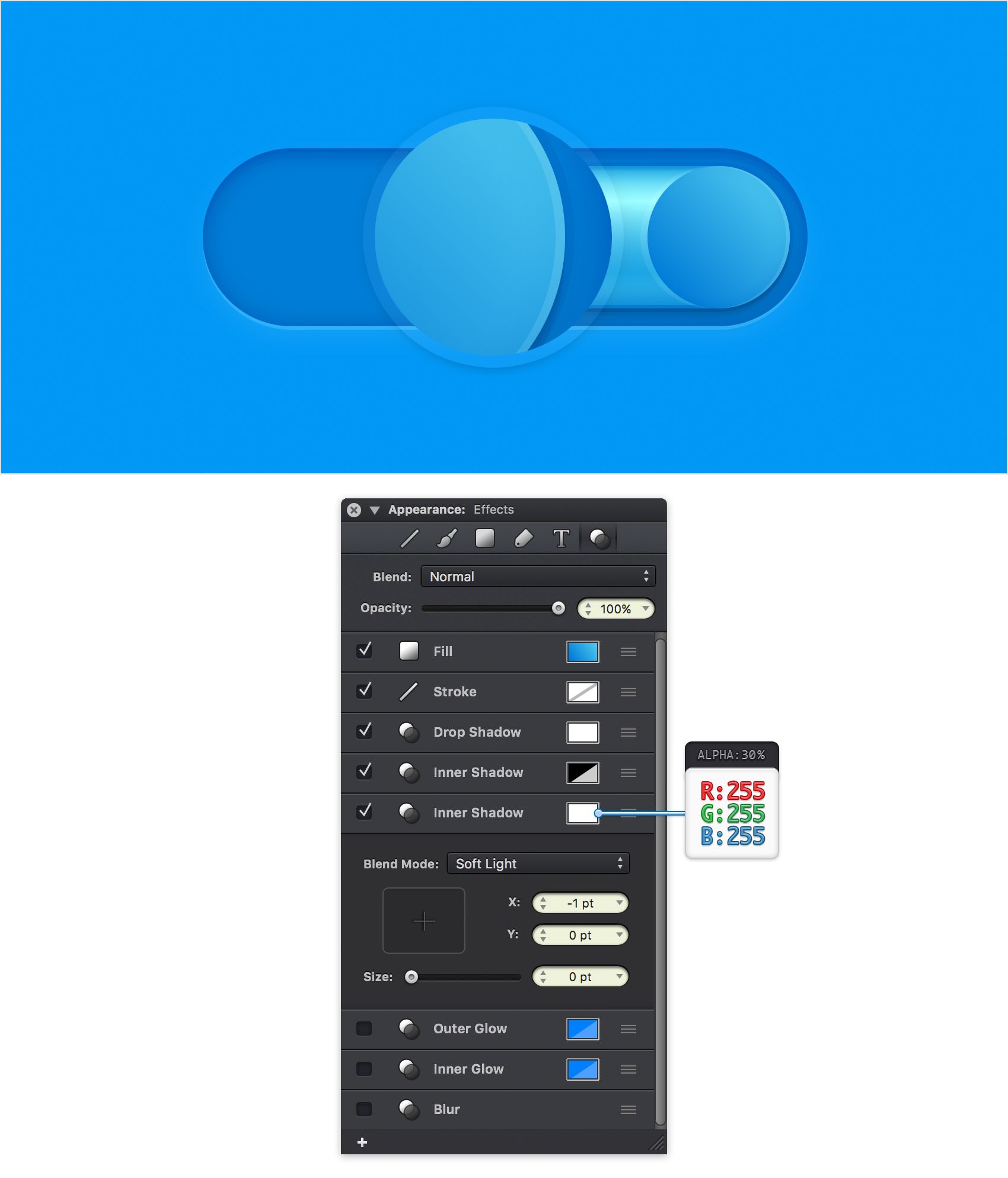
Step 26
Make sure that your right circle stays selected, keep focusing on the Effects pane and add a third Inner Shadow. Select this new effect, make sure that it lies below the existing Inner Shadows and then enter the attributes shown in the following image.

Step 27
Make sure that your right circle stays selected, keep focusing on the Effects pane and add a fourth Inner Shadow. Select this new effect, make sure that it lies below the existing Inner Shadows and then enter the attributes shown in the following image.
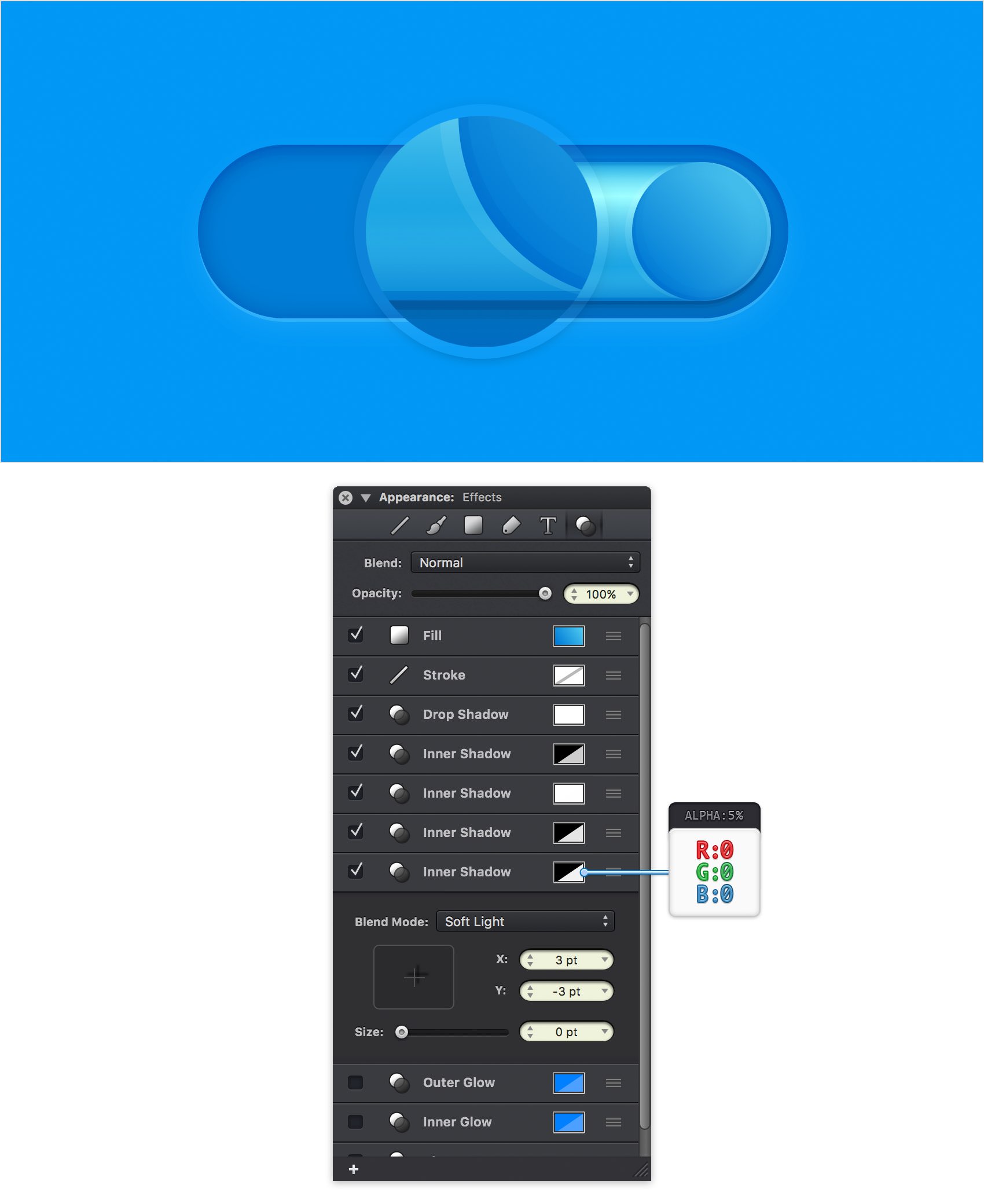
Step 28
Make sure that your right circle is still selected, right click anywhere on your canvas and go to Copy Style. Next, select the left circle, right click again on your canvas and this time go to Paste Style.
Make sure that your left circle stays selected and focus on the Effects pane. Select the existing effects one by one and inverse the values used in the X boxes. In the end things should look like in the second image.
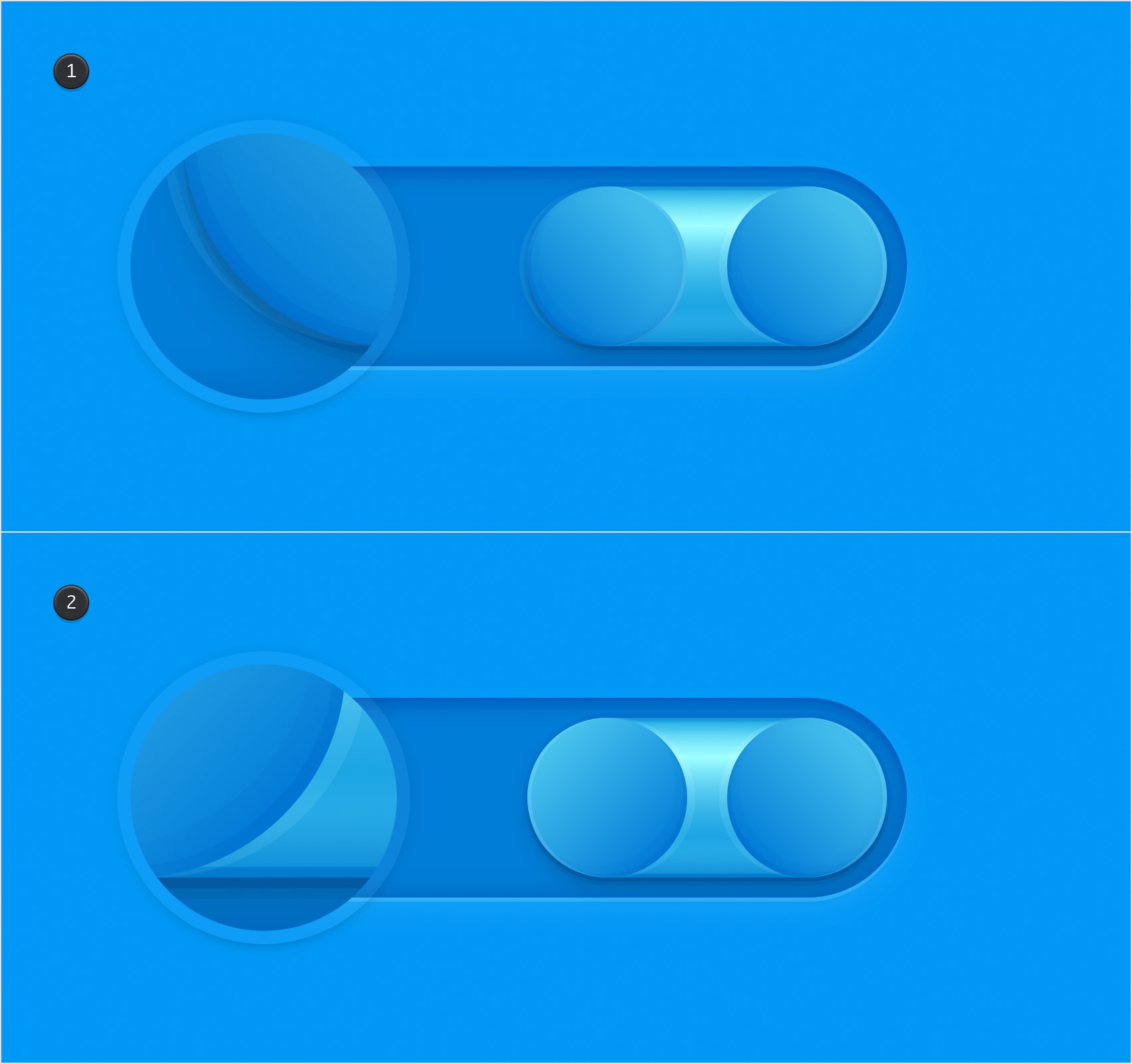
Step 29
Get back to your Toolbar, this time make the Fill invisible and set the Stroke color to R=0 G=124 B=215.
Using the Ellipse Tool (O), create a 10 px circle and place it as shown in the following image. Make sure that this shape stays selected and focus on the Effects pane. Select the existing Stroke, make sure that the Width slider is set to 1 pt and select Outside from the Position drop-down menu.

Step 30
Make sure that your 10 px circle stays selected, focus on the Effects pane, activate the existing Drop Shadow and then enter the attributes shown in the following image.
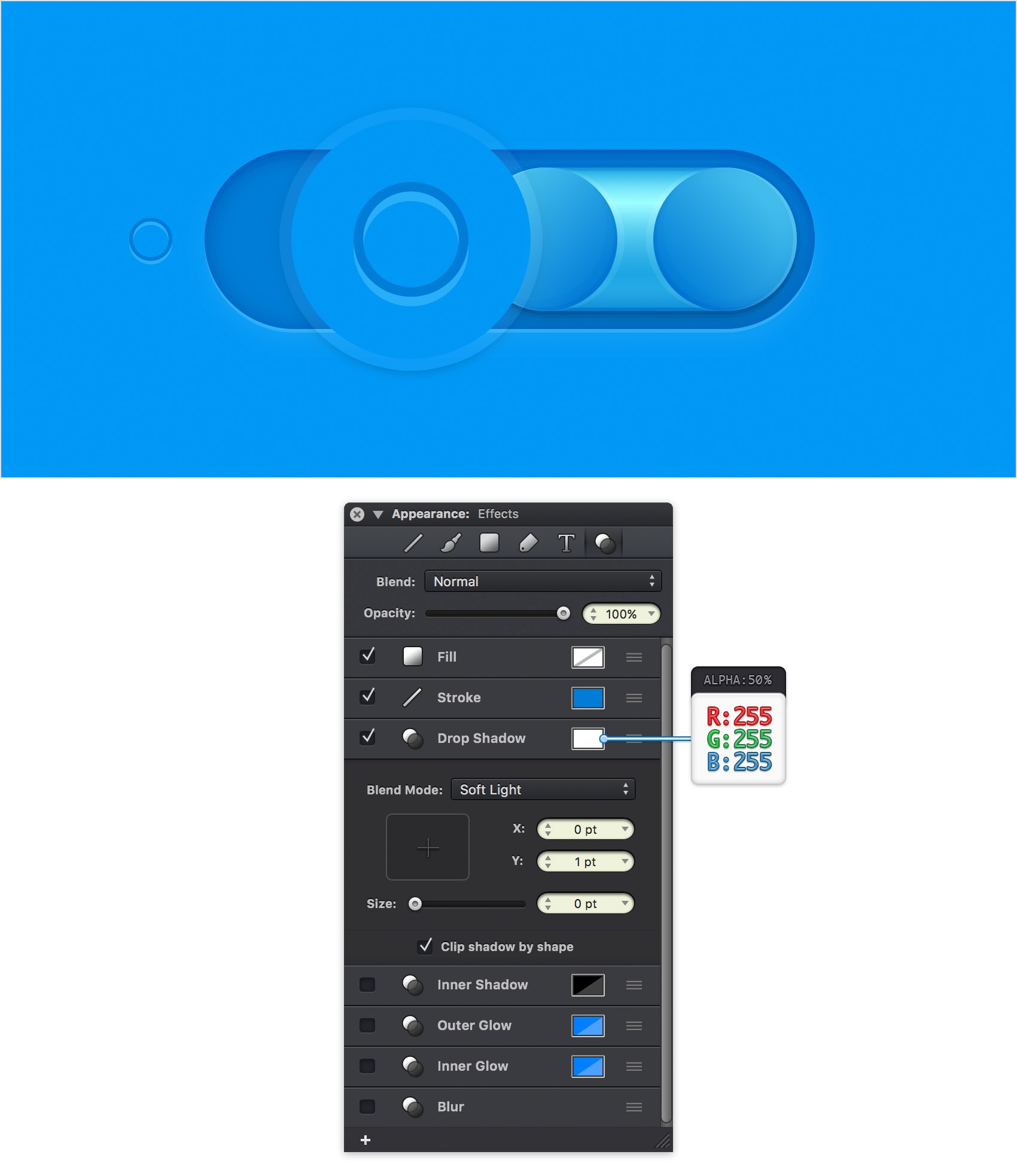
Step 31
Make sure that your 10 px circle stays selected and focus on the Effects pane. Activate the existing Inner Shadow, drag it above the Drop Shadow effect and then enter the attributes shown in the following image.
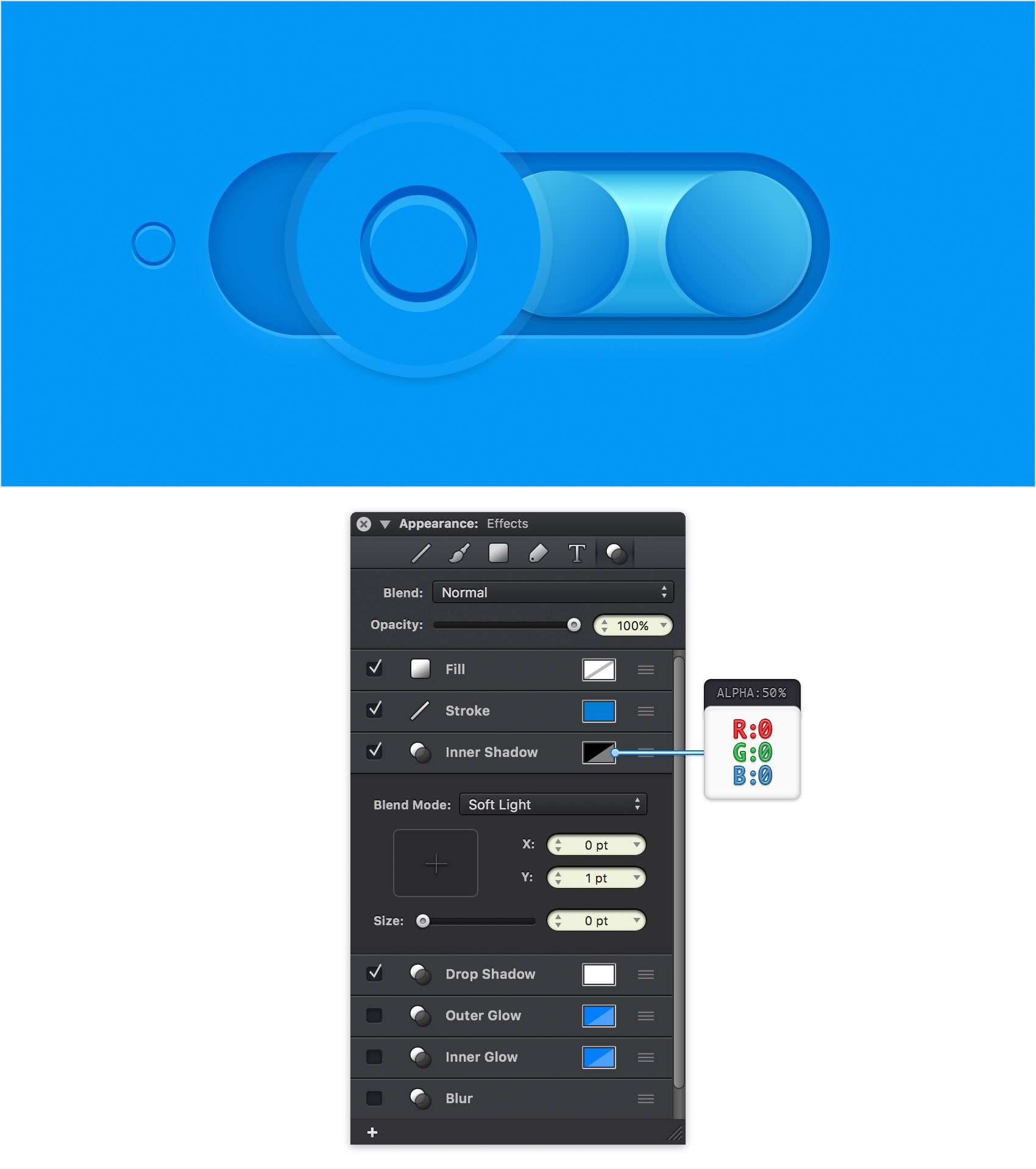
Step 32
Now, you will need a grid every 1 px. This means that you need to return to the Grid pane from the Properties panel and enter 1 px in both Spacing boxes.
Return to your Toolbar, make sure that the Stroke is invisible and then set the Fill color to white. Using the Ellipse Tool (O), create a 4 px circle and place it as shown in the following image. Make sure that this shape stays selected, focus on the Effects pane, drag the Opacity slider to 50% and select Overlay from the Blend drop-down menu.

Step 33
Reselect your 10 px circle along with that 4 px circle and Group them (Command + G). Duplicate this group (Command + C > Command + V), select the copy, drag it to the right and place it as shown in the second image.
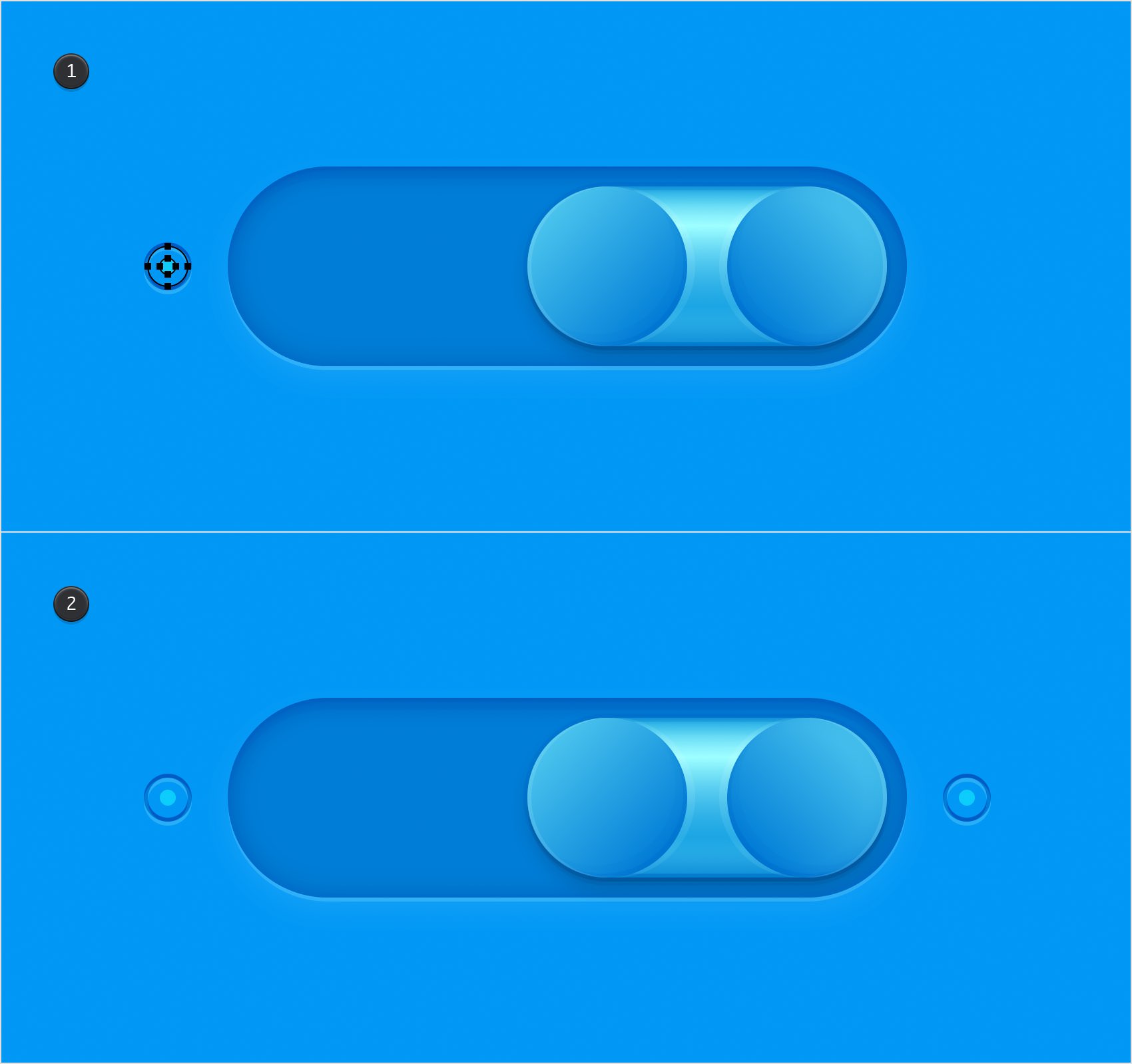
Finished Design
Congratulations, you've finished the tutorial!
Hope you've enjoyed learning some of the techniques and processes presented in these steps. As always, feel free to adjust the final design and make it your own.

Download Graphic File:
togglebuttons.idraw 


